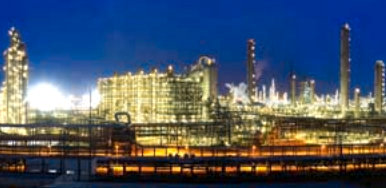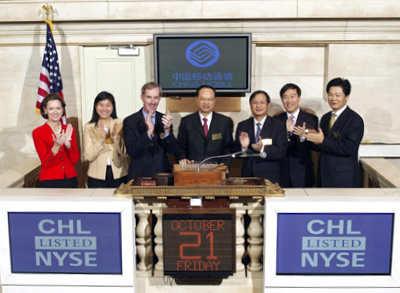
Translated by Andrew Vanburen from a Chinese-language piece in Sinafinance
SHOW ME THE MONEY, is what both investors as well as all Mainland Chinese citizens should be requesting.
State-owned enterprises (SOEs) in China sometimes don’t issue a single share.
Other times they have converted into publicly-listed firms and in some cases they spin off units that end up on the country’s bourses.
Therefore, when the question is asked where SOE profits should go, and where they actually end up, investors would do very well to lend an ear.
During the annual nationwide legislative gathering in Beijing this spring, one representative stood up in front of the hundreds of attendees and announced with a straight face that SOE profits for calendar years 2012 and 2013, expected to be around four trillion yuan, should be evenly distributed in red envelopes to each and every one of the country’s 1.3 billion denizens.
He called these gifts of around 3,000 yuan a head “consumption vouchers,” adding that it was just what the country needed to kickstart domestic shopping sprees in a big way and lessen the country’s glaring overreliance on exports.
So just who are these SOEs?
First of all, when counting all Chinese enterprises into the mix, SOEs occupy all 12 top spots in terms of revenues, which goes far toward explaining why these firms attract such attention.
Here are the top five companies in China, all of which are SOEs:
1) China Petroleum & Chemical Corporation Ltd (Sinopec) (HK: 386; SHA: 600028).
2) China National Petroleum Corp (CNPC), parent of Petrochina Co Ltd (HK: 857; SHA: 601857). Petrochina had the world’s second highest market capitalization in 2010.
3) State Grid Corporation of China, the world’s largest electric utilities company.
4) Industrial and Commercial Bank of China Ltd (ICBC) (HK: 1398; SHA: 601398), the world’s largest bank by profit and market capitalization.
5) China Mobile Ltd (HK: 941), the world’s largest mobile telecom services provider.
Free Lunch?
The zany voucher proposal would no doubt allow struggling sectors of society to be able to add a washing machine and microwave to their humble abodes.

But isn’t it true that there’s no such thing as a free lunch?
Another representative at the get-together in the capital had another suggestion: use all the money that was earmarked for oil sector subsidies as “gifts” for the country’s approximately 600 million peasants.
While none of these noble but financially ludicrous proposals was taken seriously by the assembled body of representatives, and neither has a prayer of being implemented, the two suggestions did have the effect of raising a rather seldom asked question: What exactly do SOEs do with their money?
For the time being, let’s not judge whether these wild proposals are feasible or not, but instead let’s take a look at some statistics.
Between the years 1994 and 2007, basically the bulk of SOEs either broke even or operated in the red.
In 2009, just 6% of SOEs turned a profit for the year.
Some economic analysts have estimated that between 1998 to 2005, the total profits of money-making SOEs over the seven-year period totaled nearly five trillion yuan.
But over the same period, the majority of SOEs finished in the red and were a fiscal burden on the state coffers, thus draining away from the otherwise positive effect that their profitable peers had produced.
And the repeated pledges by the authorities and the SOEs they run to “return in kind” benefits and favors to the masses for their hard work also pressures the government to keep many of these struggling state-owned behemoths afloat and their millions of workers employed.
Therefore the idea that these same firms should relinquish all claims to any profits – past, present or future – to be redistributed to all Chinese, whether employees or not, is quite untenable to say the least.

But that is not to say that a profitable SOE shouldn't be expected to reward its employees for a job well done.
The reality is, since national leader Deng Xiaoping opened the economy to external trade and internal reforms beginning in 1978, the profit distribution and sharing practices of the country’s SOEs have differed greatly from era to era, from region to region, and from sector to sector.
From the end of the Civil War in 1949 to Deng’s Open-Door Policy in 1978, the PRC had in principle practiced a policy of all SOEs handing over all profits to the Ministry of Finance.
From there, the bureaucrats would decide how much of the entire pool of SOE money would be redistributed to various investment proposals, capacity expansions or hiring sprees as they deemed fit.
Subsidies and bailouts targeting struggling or cash-poor SOEs were also decided from within the hallowed halls of the MOF.
However, with the opening of China – and especially with the advent of capital markets – the power of the bureaucrats to decide the fate of SOE windfalls was notably diminished with the advent of the country’s first capital markets in Shanghai and Shenzhen.
Henceforth, it was the upper-level management of the individual SOEs that would decide exactly what was to be done with profits.

This was of course welcomed by the SOE executives, but it also meant that when things went wrong with the books, or if losses became more the rule than the exception, then employees (and increasingly, shareholders) looked to the Chairman and CEO positions to explain poor performances.
And now with the trend toward converting loss-making SOEs into more competitive, publicly-listed enterprises, there inevitably comes in its wake a greater likelihood of accountability, especially with more and more eyes both monitoring and intimately caring about the bottom line.
Things have come a long way for SOEs since the founding of the PRC in 1949, and the opening of the country in 1978.
In 2010, the total profits of all SOEs in the country stood at over 1.13 trillion yuan.
These days, most of these firms distribute their earnings as such: 25% goes directly to corporate taxes, 25% goes to minority shareholders, 25% are legally retained as cash reserves and the remaining quarter is spent or distributed by the parent group in any way it wishes.
That means that in 2010, SOEs would have around 280 billion yuan available to distribute to every Chinese citizen evenly, should the above-mentioned representative’s well-meaning but outrageous plan be implemented.
That would leave just 215 yuan per person in China, just about enough to buy a one-way train ticket from the capital to Shanghai.
So it’s probably most feasible to leave ideas like those from the two representatives to the editorial pages or tabloids.
Meanwhile, perhaps we should allow shareholders as well as officials from the State-owned Assets Supervision and Administration Commission (SASAC) to decide what should be done with SOE profits.
See also:
China IPOs Putting Pressure On Large Caps
NEW KID ON BLOCK: 21 A-Shares In Red; 4 In Hot Water
History Professor: 'PRC Headed For Hard Landing’
KINGS OF THE HILL: 12 Banks Produce Over Half Of All Listcos’ Profit
